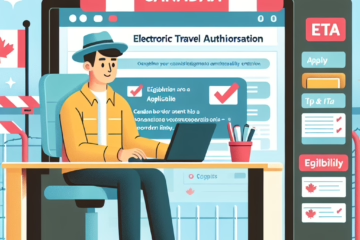A Labour Market Impact Assessment (“LMIA”) is a document from Employment and Social Development Canada (“ESDC”) that an employee may need to obtain before hiring a foreign employee.
Do You Need an LMIA?
Most employers need an LMIA before hiring temporary foreign workers. Before hiring, employers must check to see if they require an LMIA. Obtaining a positive LMIA will show that a foreign worker is needed to fill the position because there are no Canadian workers or permanent residents available to fill the job.
To see if you or the temporary foreign worker you want to hire are exempt from needing an LMIA, you must do one of the following:
- Review the LMIA exemption codes and work permit exceptions
- Select the exempt code or work permit that is closest to your hiring position and view the details; and
- If an exempt code applies to you, you will need to include it in the offer of employment.
OR
- Contact International Mobility Workers Unit if you are hiring a temporary foreign worker who is:
- Currently outside Canada; and
- From a country whose citizens are visa-exempt.
How to get an LMIA
There are different programs that one can obtain an LMIA from. Two example of programs are:
1. High-Wage Workers
Processing Fee:
You must pay $1000 for each position requested.
Business Legitimacy:
Employers must prove that their business and job offers are legitimate. If you have received a positive LMIA decision in the past two years, and the most recent LMIA decision was positive, you do not need to provide documents regarding the legitimacy of your business. If one of the two conditions above is not true, you need to provide documents to prove your business and that the offers are legitimate. These documents need to verify that your company:
- has had no past compliance issues;
- Can fulfill all of the terms of the job offer;
- Is providing a good or service in Canada; and
- Is offering employment that is consistent with the needs of your business.
You must provide your most recent documents from Canada Revenue Agency as a part of your application visa.
Transition Plan:
A transition plan valid for the duration of the temporary worker’s employment is mandatory for high-wage positions. It must describe your activities to recruit, retain, and train Canadian citizens and permanent residents to reduce your need for foreign temporary workers. If you have previously submitted a transition plan for the same position and work location, you have to report on the commitments you made in the plan.
Recruitment:
It would be best if you first placed all reasonable efforts on hiring Canadians or permanent residents before offering a job to a temporary foreign worker. Before applying for an LMIA, you must recruit through three different avenues:
- You must advertise on the Government of Canada’s job bank;
- At least two additional recruitment methods that are consistent with the job position; and
- One of these three methods must be posted nationwide, so it is easily accessible by residents in any province or territory.
You must ensure that the job listing was posted three months before applying for an LMIA and has been posted for a minimum of four consecutive weeks within the three months before submission.
At least one of the three recruitment methods must be ongoing until an LMIA decision has been issued (positive or negative).
Wages:
Wages offered to temporary foreign workers must be within the same range or similar to Canadian and permanent residents in the same position, location, or skills. The offered wage is the highest of either the median salary on Job Bank or the wage within the range you have provided to other employees in similar positions, skills, or experience.
2. Low-wage positions
Processing Fee:
You must pay $1000 for each position requested.
Business Legitimacy:
Similar to an LMIA application for a high-wage position, you must prove the legitimacy of your business.
Cap on the proportion of low-wage positions:
As of April 30th, 2022 and until further notice, businesses are subject to a 20% cap limit on the proportion of temporary foreign workers they can hire in low-wage positions at a specific location. This is to ensure Canadians and permanent residents have priority for the available jobs.
There are some sectors and subsectors where the cap is set at 30%. The list includes jobs in:
- Construction
- Food Manufacturing
- Wood Product Manufacturing
- Furniture and Related Product Manufacturing
- Hospitals
- Nursing and Residential Care Facilities
- Accommodation and Food Services
Recruitment:
It would be best if you first placed all the efforts on hiring Canadians or permanent residents before offering a job to a temporary foreign worker. Before applying for an LMIA, you must recruit through three different avenues:
- You must advertise on the Government of Canada’s job bank
- At least two additional recruitment methods that are consistent with the job position.
- One of these three methods must be posted nationwide, so it is easily accessible by residents in any province or territory.
You must ensure that the job listing was posted three months before applying for an LMIA and has been posted for a minimum of four consecutive weeks within the three months before submission.
At least one of the three recruitment methods must be ongoing until an LMIA decision has been issued (positive or negative).
Wages:
Wages offered to temporary foreign workers must be within the same range or similar to Canadian and permanent residents in the same position, location, or skills. The offered wage is the highest of either the median salary on Job Bank or the wage within the range you have provided to other employees in similar positions, skills, or experience.
If you need help with your LMIA application or hiring foreign workers, Pax Law’s lawyers can help you.



0 Comments